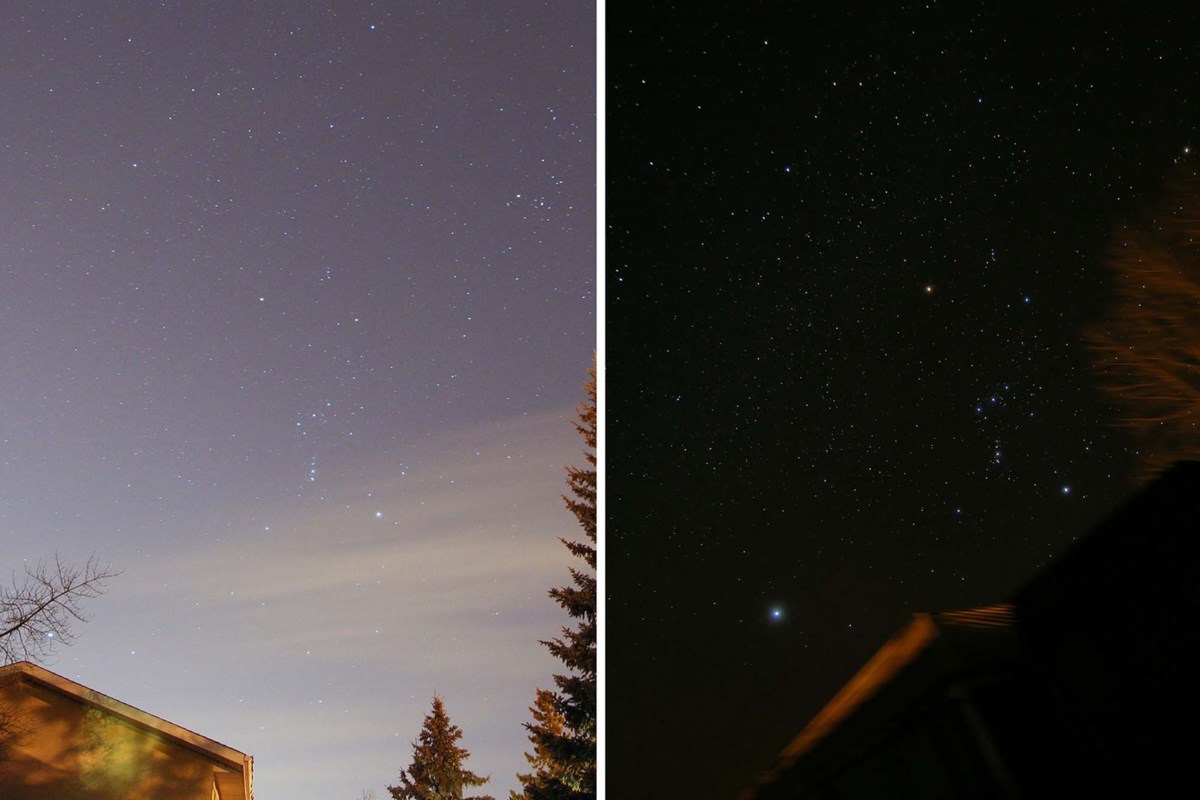
The night sky is getting about 10 per cent brighter each year due to light pollution, a new study finds — a trend that imposes steep costs to humans and animals alike.
Connie Walker of the US-based NOIRLab co-authored a study in Science last week on trends in light pollution detected by the Globe at Night project.
Light pollution is extraneous artificial light at night, Walker said. It confuses migratory birds, lures turtle hatchlings away from the ocean to their doom, and makes it harder to see the stars at night.
“It affects every single living thing on Earth.”
While scientists have used satellites to measure light pollution, Walker said those measurements miss out on light from sources not pointed at the sky, such as windows and illuminated signs, and the blue-tinted light from LED bulbs, which have proliferated in recent years.
Walker said study co-author Christopher Kyba realized they could get a better picture of light pollution using data from the Globe at Night citizen science project. Co-founded by Walker, Globe at Night asks volunteers to report how dark the night sky is at their location at a given time by comparing what they see to a series of star maps, each of which corresponds to a different level of darkness.
Walker’s team analyzed about 51,000 Globe at Night records taken between 2011 to 2022 to track changes in light pollution.
The bright night
Walker’s analysis found a roughly 9.6 per cent jump in light pollution each year — far more than the 2.2 per cent a year increase reported by satellites. This was a four-fold increase in brightness in 18 years; a person who could see 250 stars at night in one spot in 2005 would see just 100 there today.
Walker said this pollution was a consequence of population growth, building construction, and the spread of LED lights.
“LEDs have good points to them,” she said, in that they use less energy. But because they produce more light in the blue spectrum than other bulbs, they cause more light pollution.
St. Albert astronomer Murray Paulson agreed that there has been a considerable jump in light pollution in St. Albert in the last 33 years — he could easily spot Pluto from his backyard with a telescope in the 1990s, but can’t see it at all today because of ambient light.
“It’s not the sky I used to have in this town,” Paulson said.
In addition to various health impacts in humans, Walker said light pollution has profound effects on human culture.
"There’s a sort of irreplaceable awe that the natural night sky, a sky without any light pollution, provides. It inspires you and connects you to all the wonders of the cosmos,” she said.
“If we lose the night sky, we lose a part of ourselves.”
Walker and Paulson said it is easy to prevent light pollution: put shields on streetlights so they don’t shine into the sky, turn off unnecessary lights, and use lower temperature LED bulbs that produce less blue light.
Bon Accord has passed a light-efficient community standards bylaw as part of its commitment to being an International Dark Sky Community, said economic development officer Jenny Larson. The town has cut its light pollution by about one per cent since 2015 and is now a popular spot for astronomy.
“We want to protect the beautiful dark skies that we have,” Larson said.
Walker’s study can be found in the Jan. 20 edition of Science.
https://news.google.com/__i/rss/rd/articles/CBMiZGh0dHBzOi8vd3d3LnN0YWxiZXJ0Z2F6ZXR0ZS5jb20vbG9jYWwtbmV3cy9saWdodC1wb2xsdXRpb24tYmxvdHRpbmctb3V0LXRoZS1zdGFycy1zdHVkeS1zYXlzLTY0MjM2OTLSAQA?oc=5
2023-01-28 23:36:00Z
1757617154
Tidak ada komentar:
Posting Komentar